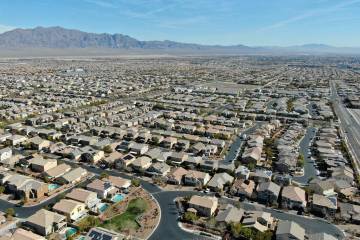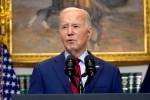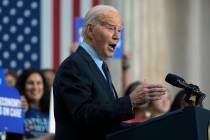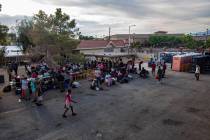EDITORIAL: Nevada’s maintenance backlog not due to lack of funding
After a decadelong economic boom, the coronavirus is in the process of delivering a major blow to Nevada. That will only worsen the state’s problem of crumbling and collapsing infrastructure.
Ten years ago, Nevada was in the throes of the Great Recession. The unemployment rate peaked at 13.7 percent at the end of 2010. Then-Gov. Jim Gibbons called a special session, which ended in March 2010, to close a nearly $900 million budget hole. The Legislature cut agency budgets by 10 percent and reduced state support for education programs by 6.9 percent. In the midst of a severe financial crisis, deferring nonemergency maintenance made sense.
As the Review-Journal’s Michael Scott Davidson uncovered, however, government officials kept putting it off. In the first report from the RJ’s new State of Disrepair series, Mr. Davidson detailed just how bad it’s gotten. Floors at a prisoner fire camp in Humboldt County started to collapse. Nevada’s Department of Administration estimates its maintenance backlog tops $600 million. The Clark County School District has closed off some playgrounds and football fields because they’re in such poor condition.
Local governments are quick to blame property tax caps, which limit the growth of property tax revenue. It’s true that property tax collections are lower now than they were in fiscal 2009. But it’s also true that property tax revenues are up almost $800 million since bottoming out in fiscal year 2014. Over the past decade, the Legislature and local officials have also passed numerous tax hikes. Those include multiple increases in the sales tax, a gas tax hike, higher fees for business licenses and registering vehicles and creating a new gross receipts tax. Additionally, the Clark County School District received authorization from the 2015 Legislature to issue $4 billion in bonds despite flat enrollment growth.
Governments throughout Nevada have more money than ever, but they aren’t spending it on needed repairs.
“It’s something that could be prioritized, but the whole concept of deferring (maintenance) is that other priorities take precedence,” said Meredith Levine, economic policy director for the Guinn Center.
Frequently, those other priorities are public employee salaries and benefits. A quick spin on TransparentNevada.com will show you just how much employee pay has increased. What’s less frequently mentioned is the increasing costs of the Public Employees’ Retirement System. In 2010, the combined contribution rate for regular employees was 21.5 percent. Today, it’s 29.25 percent.
Those dollars had to come from somewhere. Instead of reining in personnel costs, politicians keep shorting the maintenance budget. That’s why so much of Nevada’s public infrastructure is in a state of disrepair.





























